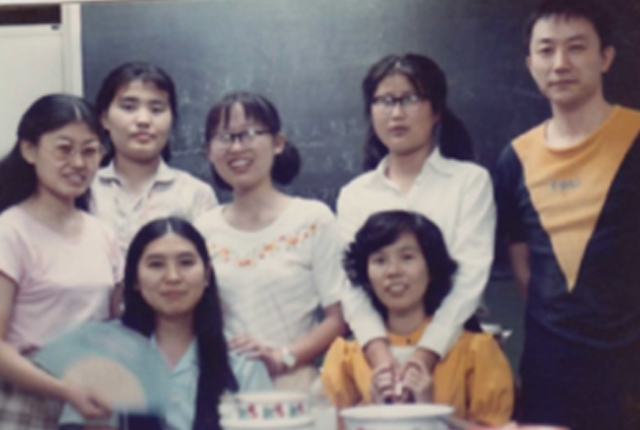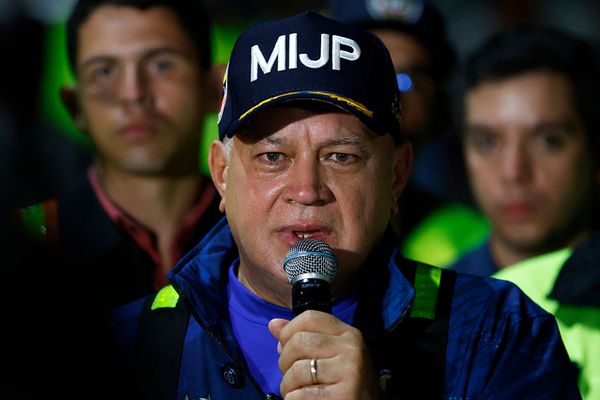
MANILA, Philippines – We are reprinting below the essay of China expert and UP professor Aileen Baviera, who died of coronavirus on Saturday, March 21. It was first published in Tulay magazine in October 2019.
A journey of a thousand miles begins with a single step. 千里之行,始於足下.
For me, that first single step was deciding in 1979 to take graduate studies at the University of the Philippines and to specialize on contemporary China. This was what launched what has become a 40-year long sojourn – and counting – as a China watcher. Wherever my career path took me – at one time or another as an academic, an armchair activist , a government analyst, an author, an editor, a policy adviser, a public speaker on international relations, an advocate of people’s diplomacy, a keen observer of global affairs – sometimes nationalist, sometimes internationalist – China always rose to the front and center of my work.
I was an idealistic college sophomore in 1977 when news of China’s Cultural Revolution first found its way into my consciousness. The revolution that Mao Zedong led in China had helped inspire many restless Filipino youth then steeped in struggle against the Marcos dictatorship.
“Bombard the headquarters!” was Mao’s call to the Red Guards, calling on them to challenge authority. But exciting as that sounded to me, I was by nature too much of a bookish and quiet loner to do any real bombarding, and so found other, more boring ways to “serve the people,” so to speak. It also didn’t take too long before I learned to recognize and shun the shallowness of political propaganda when I saw it, Mao’s as much as Marcos’s.

My first visit to China was a two-year stint as a foreign student in Beijing. By then, I was a researcher working in the Philippine government (still under Martial Law), and became one of the first scholars to benefit from a Chinese government scholarship program.
China in the '80s
In 1981, the streets of Beijing were wide and tree-lined but nearly empty of cars, dust kicked up only by public buses, military trucks, Red Flag limousines for the “gaoji ganbu” (high officials), throngs of black bicycles at rush hour, and the occasional horse- or mule-drawn carts. At the time it was impossible to miss the ubiquitous huge statues of a smiling, waving or stern-faced Mao standing in front of major edifices. People addressed each other as “comrade.”
China back then was still in the early stages of opening up and reform – starting with a household contract system intended to boost agricultural productivity (I wrote my Masteral thesis on this, and Benito Lim whose life we honor here today was my academic adviser). The trial of the Gang of Four was still news, and the regime didn’t quite know yet how fast and in what direction to move forward.
Access to information was very limited, and so when a friend asked if I wanted to work part-time at the Chicago Tribune’s Beijing bureau, I grabbed the opportunity. Thus, my initiation into the serious study of China was through clipping and filing Western newspaper reports on China. The stories then were more sympathetic to China than they are now. The New York Times and the International Herald Tribune became staple fare, as were translations of radio broadcasts through what was then known as FBIS. The more I read, the greater the fascination for the remarkable history that was unfolding.
And... I traveled the country.
From the hot deserts in Xinjiang and Gansu to the grasslands of Inner Mongolia to icy Harbin and Heilongjiang. From Shanghai to visit the former “Paris of the East,” to Tianjin for a taste of its famous dumplings, then to Buddhist temples floating in the clouds, and misty vegetable farms in Sichuan. To Shenzhen before it became Shenzhen, and to Pudong when it was but a vision.
More than taking me places, these travels took me to the people: fellow travelers on a train asking me if I were an Uyghur because they hadn't yet seen one, a lily-footed grandma skillfully scaling the steps of a mountain trail while I huffed and puffed my way up, a village circus troupe performing all muddied and ragged in a park, a young Mongolian woman making cheese from horse’s milk. This was the China I came to know during those first two years.
EDSA, Tiananmen as watershed
Within days of my return to Manila from my studies in Beijing, the bullet that killed Ninoy Aquino was fired, sparking events that led to the People Power revolution. Democracy prevailed in 1986 through a peaceful regime change all Filipinos could be proud of. Taiwan, South Korea and other countries followed suit in abandoning dictatorship; in what became known as the “Third Wave” of democratization.
Three years after the people’s victory at EDSA, Chinese youth and workers also spilled into the streets demanding political reform and an end to corrupt government, but their story ended only in tragedy at Tiananmen Square.
This marked a watershed in my China-watching. The rose-tinted glasses came off; but even the large dose of cynicism that replaced it was soon moderated by grudging respect and admiration for how quickly these people bounced out of political crisis to eventually transform China into an economic juggernaut. There was still much that could be learned from and about China, so I remained an avid watcher.
My attention turned to social and economic development issues, because China remained poor but Deng Xiaoping wanted his people to “get rich quick.” Deng embarked on ideological innovation (“revisionism”, for the less polite). To him, it didn't matter “if the cat is black or white, as long as it catches mice.” In this spirit of experimentation, there was some room for Chinese and Filipino civil society organizations to try to learn from each other; after all, the Philippines and China were both developing countries sharing many common problems.
I worked with fellow China-watchers in the Philippine Association for Chinese Studies and Philippines-China Development Resource Center to help strengthen civil society linkages, including with groups like the Nanjing-based Amity Foundation and the China Association for NGO Cooperation.
Among the highlights of these interactions was training Chinese development workers in project management, and sending Filipino health workers for acupuncture training in Nanjing. When I subsequently moved to the university, my work allowed me to help expand linkages not only with Chinese intellectuals and academic institutions but with their policy think tanks working on Asian affairs and international relations. Through these, I came to appreciate the complexity of the China story even more.
Lesson: Don't be emotionally invested
When I set up the Asia-Pacific Pathways to Progress in 2014, a period when Philippines-China relations was teetering on a cliff edge, the premier issue was naturally the maritime disputes that had so plagued relations. Nearly 20 years before that was China’s occupation of Philippine-claimed Mischief Reef and my baptism of fire as a China analyst at the Foreign Service Institute, the think tank and training institute of the Department of Foreign Affairs. I had some sleepless nights while preparing for talks with China. The lessons about Chinese foreign policy and negotiating behavior during those years were priceless. Sadly, twenty years hence and with so much engagement having taken place, we seem to be worse off now than when we started as far as territorial tensions are concerned.
But let me still end on a positive note to say thank you, China, for having made my life thus far interesting. Just as Benito Lim mentored me in China studies, allow me also to give some unsolicited advice to our younger China watchers.
First of all: do not be emotionally invested in the subject of your study; you should try to maintain objectivity at all times, which can be quite difficult given the state of ties today. But as a well-known Chinese saying goes – one that even Mao Zedong would repeat – “seek truth from facts.”
My second advice: recognize that China is complex and has multiple facets; it is not unidimensional and not always clear as day. Chinese society is old and it is new. There is the State, and there is the 1.4 billion thinking, breathing, living people. Simplistic thinking will not do. In the end, Deng Xiaoping’s cat was neither black nor white; it is grey. This makes China watching from the Philippines or anywhere else a challenging undertaking.
Finally, and this is also in the context of recent years’ difficult relations between the two states: if one has to take a side, one must take the side of the Filipino people.
As China’s national power rises and its global economic and political clout increases, it will have more resources to defend its interests and more friends to support its agenda. The Philippines, on the other hand, will have only us Filipinos to defend our interests and to promote our welfare. – Rappler.com







